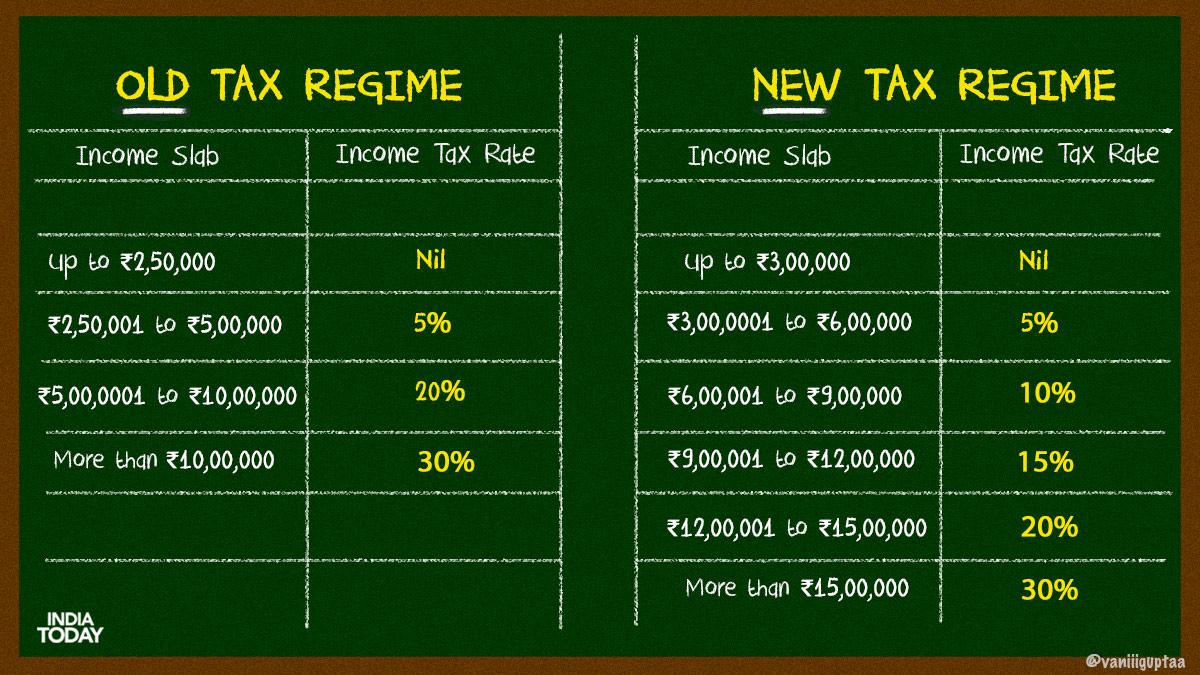
By Koustav DasThe new income tax regime has become a lot more attractive after it received a makeover in the Union Budget 2023. It now features lower tax slabs, an increased rebate limit, and even a standard deduction of Rs 50,000.
While it still does not include 80 odd deductions that a taxpayer can claim under the old income tax regime, the new benefits amended under the regime could boost its popularity starting this financial year.
At the same time, the old income tax regime also remains equally attractive for traditional taxpayers with a lot of investments. They can simply claim more deductions under it and save more tax, even though the old tax regime features higher tax slabs.
So, which of the two should you choose to gain more tax benefits? Well, there is no black-and-white answer to this question, and it varies from individual to individual.
First, let’s have a look at some aspects of the new tax regime.
Lower tax slabs
Individuals should note that tax slabs applicable under the new income tax regime were reduced further in the Union Budget 2023. So, even if an individual cannot claim deductions under popular sections of the Income Tax Act, they can get the benefit of lower upfront tax slabs.

Simple and straightforward process
The intention of the government to introduce the new income tax regime was to make the process of tax filing more convenient for taxpayers. Since no deductions can be claimed under the new tax regime, individuals do not have to declare any investments or any proof. They will simply be taxed upfront on their gross income at a much lower tax rate, compared to the old regime.
Who benefits from new tax regime?
Simply put, any individual who earns Rs 7.50 lakh per annum or less does not pay any tax under the new regime, all thanks to the increased rebate limit valid on income up to Rs 7 lakh and a standard deduction of Rs 50,000.
Does this mean it does not benefit people who earn more than that? Not according to tax experts, who believe that it will benefit any taxpayer who does not have a good number of investments. Individuals with lower investments or no investments would simply end up paying more tax under the old tax regime, due to higher tax slabs.
For instance, anyone with an annual income of Rs 10 lakh per annum would be taxed at 30 per cent under the old regime. In the new regime, the same income would get taxed at 15 per cent.
Therefore, individuals who have an income of up to Rs 15 lakh per annum but not enough investments can benefit if they choose the new income tax regime.
Now, let’s have a look at the old income tax regime.
Allows deductions
The new income tax regime has been reinforced by the government and is likely to see higher adoption this year. But it does not make the old income tax regime less attractive, especially for people who have a lot of investments.
This is because individuals can claim big deductions on investments under Section 80C, Section 80D, and other sections of the Income Tax Act. Individuals with a housing loan are often advised to select the old income tax regime as they can claim deductions of up to Rs 2 lakh, based on annual interest paid on the housing loan.
It could also prove beneficial for salaried individuals living in rented accommodation. On furnishing documents and rent receipts, the tax on HRA can significantly come down, helping the individual save more tax.
Better tax and future financial planning
Opting for the old income tax regime also leads to better tax planning. Any individual who makes a lot of investments will find the old income tax regime useful when it comes to planning investments for the future. Investing in an NPS, a PPF or any other long-term tax saving instrument would not add to a person’s retirement corpus, but also lead to steady tax savings.
This, however, is not applicable to the new income tax regime which caters to mostly youngsters with lower income and lack of investments. While it could see wider adoption this year, tax experts feel that it is not enough for the old income tax regime to lose its appeal.
Who benefits from old tax regime?
The old income tax regime is suitable for salaried individuals who earn above Rs 7.50 lakh and also invest a healthy amount towards schemes applicable for deductions under various sections of the income tax act.
While choosing the new regime will not cause major losses for people earning up to Rs 8 lakh per annum, those earning more than that and having a lot of investments should definitely compare which tax slab allows them to save more tax.
Meanwhile, people with a housing loan should also consider the old income tax regime as it allows them to claim a deduction of Rs 2,00,000 per annum towards interest.
In conclusion, both the old and new tax regimes have a specific set of advantages and disadvantages. The new regime offers lower tax slabs, but no deductions. The old regime has higher tax slabs but allows all the basic deductions that one can claim by making investments.
The new regime allows taxpayers to avoid several complex steps in filing ITR, while the old regime allows better financial planning for the future.
Which tax regime do you feel is better? Let us know in the comments below.
Also Read | Old income tax regime vs new income tax regimeWhich one should you choose?



